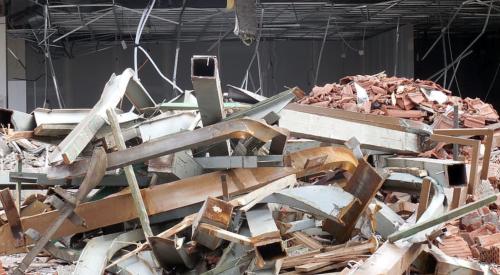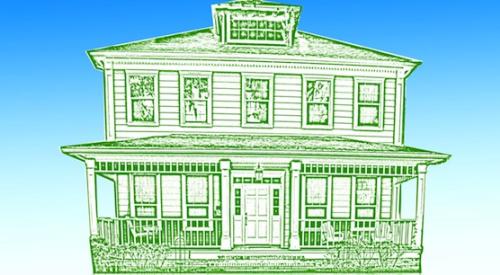Builders have watched prices for building materials rise over the past year and have heard the excuses. But there's more to the story.
Demand has declined in the past few months for gypsum and other wood products, which have had a capacity problem because there aren't enough mills, says Jim Haughey, director of economics for Reed Construction Data. Mills don't just pop up overnight to respond to demand, and similar to cement plants, "no one likes to live next to that," making future construction even more difficult, Haughey says.
Worldwide construction, especially in Asia, has had its hand in shortages, sucking up materials — particularly ready-mix concrete. And high demand means higher prices.
Last year's hurricanes have pretty minimal impact at this point, Haughey says, although "there are hints of shortages for roofing shingles" and asphalt supplies, which have become pricier because of oil politics in the Middle East.
Metals in particular could influence materials prices overall. "The metals — copper especially — are seeing shocks now, and all the cost in raw materials hasn't show up yet," says Michael Carliner, an NAHB economist. Haughey attributes the surge in prices — nonferrous piping and tubing has shot up more than 115 percent in the past year, according to Reed Construction Data statistics — to an economy that hasn't experienced as much growth since World War II. "When the world economy picks up 1 or 2 percent, copper picks up three to four times that. It'll be high for a couple years," says Haughey.
August's shut down of the BP oil pipeline in Alaska shouldn't have a measurable affect on building material costs in the short term because the crude oil inventory is large enough to meet demand for several weeks, Haughey says. The exception, however, is the Pacific coast, which relies on Alaska for most of its crude oil and keeps a smaller supply.
A long-term shutdown, however, could mean two things, Haughey says. "One is the rise in [cost of] fuels and oil based products; the second is the drop in economic activity as buyers become more cautious. "
What can change the overall picture drastically, Haughey predicts, are inflation fears that cause interest rates to spike; hurricanes that shut down the Mississippi River; and a shortage of money triggered by conflict in the Middle East.
| Softwood Lumber, June–July prices: Down 2.7 percent | Fall/winter outlook: Prices will likely steady or rise slightly — risk is low, Haughey says. "If home builders make adjustment to the lower levels [available], they'll order what they need. Right now, they're ordering less than they need." Carliner predicts a downward trend. |
| Construction Plastics, June–July prices: Up .8 percent | Fall/winter outlook: For anything plastic, prices should stabilize with little inflation. "Barring any major hurricanes, it should be OK," Haughey says. |
| Brick, June–July prices: Up .3 percent | Fall/winter outlook: The price builders pay for brick will depend on the part of the country; brick takes a lot of energy to make and it's expensive to transport. "If markets weaken in brick-intensive areas like the Midwest," Haughey says, "then we'll see that reflected in brick prices." |
| Nonferrous Pipe and Tubing (Copper), June–July prices: Down -6.8 percent | Fall/winter outlook: Copper has hit its peak, Haughey says, so builders can expect prices to stabilize. "Copper ore and scrap have stabilized, so it'll take a while for it to affect pipe and tube prices." |
| Steel and Metals | Fall/winter outlook: Steel, namely steel plates, will stay where they are and peak, staying high until early 2007, says Purchasing magazine's executive editor, Tom Stundza. Construction grade steel will likely be expensive in the second half of this year. "It's just seasonal demand." |
| Gypsum, June–July prices: Up .9 percent | Fall/winter outlook: Prices won't dip, and any percentage increases will be in the single digits into 2007, Haughey says. |
| Ready-Mix Concrete, June–July prices: Up 1.7 percent | Fall/winter outlook: Expect prices to continue to climb; in the past year and a half, prices have risen around 10 percent, and a world shortage doesn't signal any sign of relief, Haughey says. Carliner spots relief in 2007 to 2008. |
| Asphalt Roofing, June–July prices: Up .4 percent | Fall/winter outlook: No relief until 2007. "There should be adequate supplies, but it's not going to retreat to what people would consider to be normal until late this year or next year," Haughey says. |









